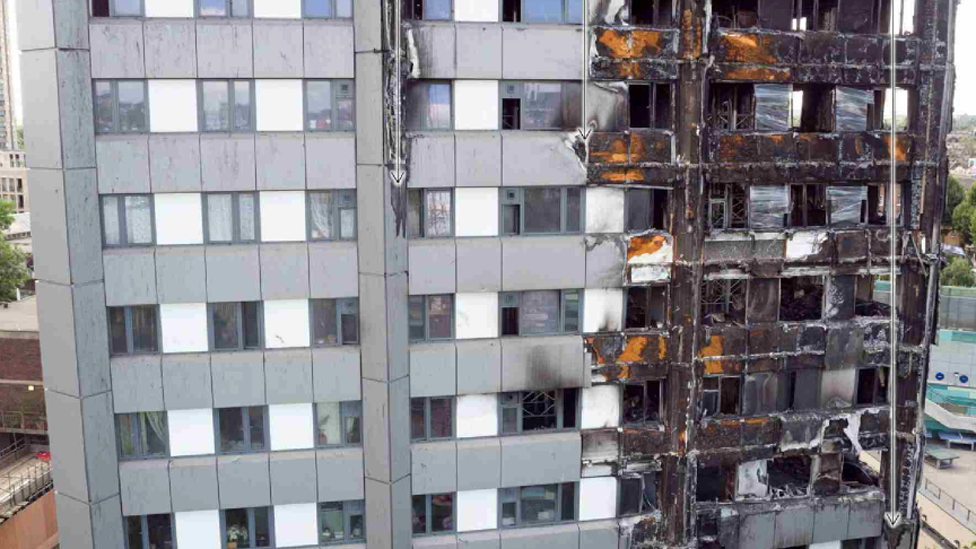London fire: Fire safety risk inspections pointless, says expert
- Published
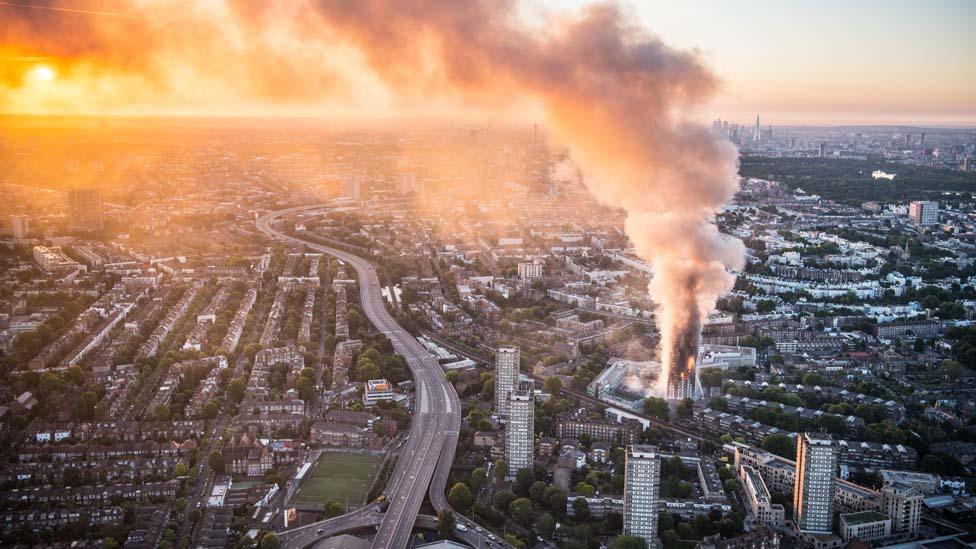
Grenfell Tower was deemed to only have a medium fire risk
The system to assess fire safety of high-rise buildings in the UK is "pointless", a leading expert claims.
Fire risk assessments (FRAs) carried out by councils do not consider factors such as external cladding, inspections of which are under way.
It is feared cladding helped spread a blaze that killed at least 79 people at Grenfell Tower, which was not deemed a high-risk during inspections in 2016.
Prof Arnold Dix said the FRA system was simply a "box-ticking exercise".
Prof Dix, an independent disaster investigator who looked into the Lakanal House fire, in Camberwell, which saw six people killed in 2009, said the fact Grenfell Tower burnt so fast despite being deemed only a medium risk showed FRAs did not work.
'One-sided assessment'
Councils across the country are carrying out FRAs following the tower block fire.
London Fire Commissioner Dany Cotton has written to all housing providers urging them to carry out FRAs.
But Prof Dix said this was "pointless" as the same checking system had failed twice - in Lakanal and Grenfell.
He said FRAs did not look inside individual properties and did not need to see how the building was originally designed to evacuate people, meaning it was "like having a full health check and only checking the tonsils".
Prof Dix added the assessments did not take into consideration important factors such as:
How many people live in/use the building
If household appliances are a high fire-risk because they are very old
If extra beds have been brought in that are highly flammable
If residents have changed the inside of their flat by removing fire doors or altering walls
The ability of people to leave their homes quickly
"Fire assessments are a box ticking exercise. Any real expert needs to view the building in entirety and that is not happening," he said.
"They are a one-sided assessment by someone who doesn't know the building."
According to the Fire Protection Association, FRA compliance is only a guarantee of "evacuation before collapse" in the event of a fire.
But, Prof Dix said people in tower blocks with a high risk should not panic as he did not trust the reliability of the reports.
Legally, a sufficient FRA is required on all buildings in England, however, there is no fixed period for a review, although they must be updated if materials used in the building are changed.
An expert shows what is wrong with Taplow Tower which has now been evacuated over safety concerns
Each assessment is also subjective to the experience of the person carrying out the check.
FRAs are carried out on all types of buildings such as hospitals and schools, not just tower blocks.
Howard Passey, principal consultant at the Fire Protection Association, said it was best practice for FRAs to be carried out every year.

What assessments look at:
Fire escape routes - a staircase should be able to protect against a fire for 60 minutes
Emergency lighting, signage
Fire doors
Alarms
Electric cabling/gas pipes
Source: Fire Protection Association

But, BBC London research shows this has not been happening across council-maintained tower blocks in the city.
It shows there are 16 council-run tower blocks with a high-risk rating, which means the building would not be considered able to contain the spread of a fire.
Figures obtained by 30 out of 33 councils also show 419 tower blocks received the medium-risk rating.
Of the 21 tower blocks managed by Kensington and Chelsea Council, which includes Grenfell Tower, all were rated as having a medium FRA rating.
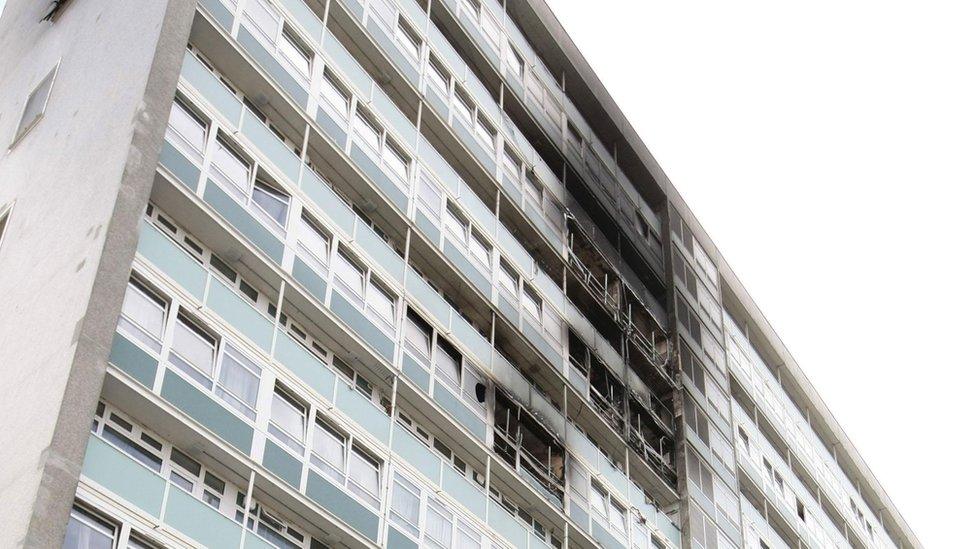
Experts have expressed concerns that lessons were not learned since the Lakanal House fire in 2009
Tower Hamlets has eight tower blocks which have been assessed to have a substantial fire risk.
In a statement it said residents had been contacted to say FRAs had been carried out in all its blocks in the past nine months.
Since the Grenfell Tower blaze further assessments were carried out.
"Works are scheduled to take place in the next 10 days which were agreed with the London Fire Brigade after joint inspections took place," it said.
"We are working to ensure that the works are completed as soon as possible."

Tower blocks with a high/substantial fire risk:
Fred Wigg and John Walsh towers in Waltham Forest
Daubeney, Lewisham
Bisley House, Wandsworth
Pangbourne and Moulsford towers in Islington
Somerton and Mary Greentower in Camden
Alzette, Brewster, Brodick, Modling, Offenbach, Puteaux, St Gillles and Velletri House in Tower Hamlets

It said further fire safety advice had been given to residents "to prevent a fire in the home" and reassurance has been given that they "are safe to remain in their homes".
Mayor John Biggs said however, the recommendations for changes it had received "were not unmanageable".
Hammersmith and Fulham, Westminster, Lambeth and Newham councils were all unable to provide their latest FRAs.
- Published19 July 2017

- Published24 February 2017
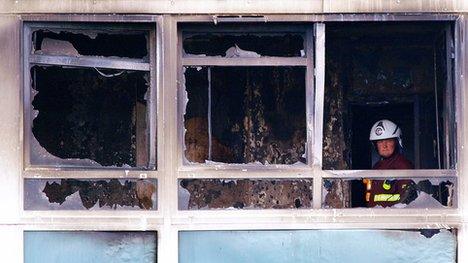
- Published23 March 2015

- Published3 April 2013

- Published28 March 2013
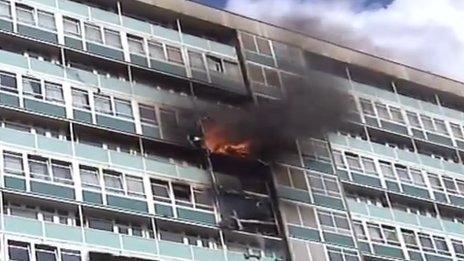
- Published3 July 2017

- Published29 October 2019
